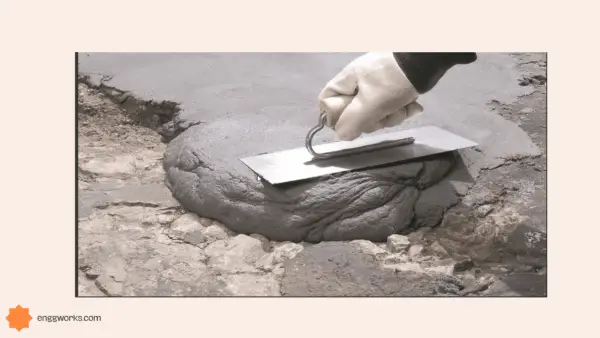When it comes to grouting tiles, silicone grout offers distinct advantages over traditional cement, epoxy, and latex-based grouts.
This grout fills and seals spaces between tiles with a formulation blending silicone polymers, fine silica sands, pigments, and plasticizers.
It converts into a strong waterproof material that bonds tiles together while allowing subtle expansion and contraction movements.
In applications ranging from bathroom showers to commercial kitchen backsplashes, heavy-duty industrial floors, and near-everything.
In between, silicone grout outperforms rival grout categories in terms of longevity, performance in wet environments.
Protection from cracking, shrinking, and many stains.
We explores the composition, properties, installation best practices for silicone grouts.
Comparing their benefits directly against cement grouts and others.
To demonstrate why silicone is increasingly becoming the first-choice option for trusted water- and stain-resistance.
In demanding tiled settings across civil construction projects and residential contexts alike.
What is Silicone Grout?
Silicone grout refers to a type of grout used in tile installation that contains silicone as a key ingredient.
Unlike conventional cement or epoxy grouts, 100% silicone grout is made from a silicone polymer, silica sand, plasticizers, and pigments. The high silicone content provides flexibility and water repellency.
purpose of silicone grout
The purpose of silicone grout is to fill and seal the spaces between tiles. Its flexible nature allows it to withstand expansion and contraction of tiles without cracking or crumbling like traditional cement grouts.
This also makes silicone grout more stain and mold resistant. The polymers bond tenaciously to produce durable, long-lasting grout lines.
Materials Used in Silicone Grout
The primary raw materials used to manufacture silicone grout include:
- Silicone Polymers – Provide flexibility, adhesion, and water repellency
- Silica Sand – Hardens the grout
- Pigments – Added to produce different grout colors
- Plasticizers – Help maintain flexibility and workability
Formulating the percentages of these ingredients allows manufacturers to optimize silicone grout for various applications. Added latex may also be used to improve adhesion and hardness.
Advantages of Silicone Grout
Silicone grout has many advantages in civil engineering projects including:
- Tile Installation – Highly flexible nature resists cracking and accommodates tile movement. Useful for floors, walls, countertops, and backsplashes.
- Waterproofing – Water repellent properties prevent water penetration behind tiles. Ideal for wet areas like showers.
- Chemical Resistance – Resists oils, acids, alkalis, and other chemicals. Useful in laboratories and industrial contexts.
- Temperature Resistance – Withstands high and low temps better than organic grouts.
- UV Exposure – Durable in outdoor/sunlight applications.
Its versatility makes silicone grout an important tool for tilesetting and water management in the built environment.

applications of silicone grout
silicone grout has a wide range of applications in construction projects, some among them are:
Best Silicone Grout for Showers
In shower installations, 100% silicone grout is an ideal choice because of its waterproof qualities and mold/mildew resistance. Fungal growth requires water and organic matter, both of which silicone grouts inhibit.
A silicone grout with included biocides or Microban technology further deters mold and bacteria. Staining is also less likely with silicone grouts’ low water absorption.
Silicone Grout for Tiles
Silicone grout is highly recommended for grouting all types of tile materials including ceramic, porcelain, glass, mosaic, granite, marble, and natural stone.
It bonds well to tile edges and resists common stains. Mixing in color tints allows matching any tile color scheme. Compared to epoxy, silicone grouts are easier to install, tool, and clean off tile surfaces before curing.
For floor tiles, use sanded grout. Unsanded for walls. Ensure spacing matches grout manufacturer guidelines.
Silicone Grout for Bathrooms
The water resistance, mold resistance, and stain protection of silicone bathroom grout makes it ideal for tiled bath and shower surrounds.
Hot humid conditions, temperature fluctuations, and contact with water accelerate damage to cement and epoxy grouts.
Silicone grouts withstand these exposures. Their flexibility and adhesion resist cracking from subtle tile movements.
Bathroom tile layouts often incorporate various materials like ceramic, glass, and stone which silicone grout bonds to tenaciously.
Water-proofing additives can boost performance further for baths and showers. Antimicrobial versions inhibit mold and bacteria growth.

Silicone Grout for Kitchen Backsplashes
Kitchen backsplashes demand grouts that resist grease, oil, food stains, temperature swings, and high moisture. Silicone grouts meet these needs.
Their non-porous waterproofing prevents liquid penetration behind tiles in splash zones.
Staining agents also cannot absorb in. Silicones withstand heat from cooking and extremes from dishwasher steam.
Antimicrobial grout versions prevent unwanted bacteria and mold growth on food prep surfaces.
Silicone grouts make excellent grout choices for long-lasting, high-performing kitchen backsplash installations.
Silicone Grout for Floor Tiles
On floor tile installations, silicone grout’s flexibility manages stress from deflection better than rigid cement and epoxy grouts.
Movement of substrates under live loads rarely damages silicone grout.
Its durability also better withstands abrasion from foot traffic and cleaning. Use sanded floor grout for increased hardness.
Chemical resistance suits commercial kitchens and industrial floors. Easy cleanability benefits garage/basement workshop floors. Stain protection maintains appearance.
For best results filling floor tile joints, ensure proper tile spacing/alignment suits silicone grout limits.
Silicone Grout Colors
Silicone grouts are available in a wide spectrum of colors via pigment blending. This allows matching any tile color scheme.
Common colors include variations of white, gray, beige, and black. Vibrant secondary colors are also produced.
Unlike cement grouts silicone grouts retain consistent, uniform color that resists fading.
Silicone Grout Caulk
Silicone grout caulks function as grouts and caulks in one. They fill joints between tiles and seal connections to walls, corners, fixtures interrupting tile fields.
This simplifies installation compared to using separate tile caulk and grout.
The silicone formulation provides strong, waterproof adhesion and flexibility to accommodate differential movement.
Some silicone grout caulks are mold resistant. All match typical grout colors.
Joint width should fall within manufacturer specifications for proper filling and tooling.
Silicone Grout vs Cement Grout
Silicone and cement grouts differ significantly:
- Flexibility – Silicone grouts remain flexible, cement grout cures rigid.
- Cracking Resistance – Silicone resists cracking as tiles shift; cement is prone to cracks.
- Waterproofing – Silicone repels water; cement is porous.
- Staining – Silicone resists many stains; cement is more stainable
- Mold Resistance – Silicones deter mold growth, cement allows it.
- Movements – Silicone accommodates small tile movements, cement does not.
Thus silicone grouts outperform cement grouts exposed to water, staining, tiles shifting, and other stresses.
Silicone is more expensive initially but pays off long-term.
Silicone Grout Drying Time
Silicone grout drying depends on environmental factors, but typically:
- Skins over within 10-20 minutes.
- Dries firm to touch in 2-4 hours.
- Fully cures and reaches maximum properties in 24-72 hrs.
Colder conditions extend drying. Avoid water/chemical contact before full cure.
Some silicone grouts now feature rapid-set versions that cure in 4-6 hours for quicker return to service.
Silicone Grout Sealant
Silicone sealants serve multiple purposes in grouting applications. They:
- Seal corners, changes of plane between tile and walls.
- Fill control/expansion joints in tile fields.
- Seal penetrations through tiled surfaces.
Compatible silicone sealants integrate with silicone grouts for reliable waterproofing. No pre-treating tile edges prior to sealing.
Sealant beads accommodate more movement than grout. Some formulas are mold/mildew resistant.
Match sealant spacing/width to product specifications.
Conclusion
Silicone grouts offer civil engineers and tiles etters significant performance benefits compared to traditional Portland cement and epoxy grouts.
Their unmatched flexibility, adhesion, waterproofing, and durability in demanding applications make silicone grouts a versatile, long-lasting grouting solution for challenging tile installations.
Specifying silicone grout for construction projects provides resilient, reliable performance.






